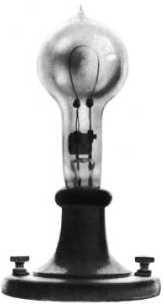|
INTRODUCTION
I
first saw the generating buildings in March of 1982.
They were overgrown to the extent of having Maple
Sycamore trees growing on top of some roofs.
The front entranceway was about 6” deep in
soil. The
rear area was matted with ivy and bramble.
Ivy
and Sycamores covered just about everything.
Distinct features such as a brick courtyard were
softened by collapse and growth to be invisible, yet,
the layout was curious.
The building
comprised two large sections joined by a central lead
lined gulley. Inside the building, in the
smaller, lower section, was a huge concrete mounting
with a deep semicircular scallop cut into the floor.
In the other taller section, a sawmill bench was
bolted to the floor.
Tall
sycamores grew from within a bunker, leaning dangerously
over the rooftop of the smaller main section. The
lean of several trunks had forced a courtyard wall over.
The building had suffered a partial collapse.
Birds and squirrels fought for possession of the roof
spaces. All
the roofs leaked. The gutters and drainpipes were
cracked and with the mounting layers of
vegetation and soil, it would not have been long before
nature absorbed the structure completely.
The
original use of the building was not apparent.
That it must have housed some fairly substantial
machinery was obvious.
Despite the dereliction, the building could serve
a useful purpose as a workshop.
Indeed, part of it was already so being used. Initially, the incentive for repairs was merely to expand
upon such use and prevent further collapse.
Not only that, the subtle charm of the complex had won
me over.
At
that time I was unaware the building had supplied not
only the private estate of Lime Park with electricity
around the turn of the century, but also the village of
Herstmonceux – in a buzz of high technology which was
the very beginning of the modern Age of Electricity.
Armed with the facts, even now it is difficult to
picture the extent of the industrial activity in this
long forgotten backwater of Sussex. However, that it all happened, is beyond doubt.
Unfolding details reveal how this most versatile
form of energy spread across the country to become
quickly popular.

Edison's
light bulb
To
know what brought about such changes and an equally
sudden halt of local activity, we must go back to December
1878, when Joseph Wilson Swan gave his first public
demonstration of a reliable electric filament lamp, or
light bulb. The
following year in October 1879 Thomas Edison
demonstrated his version of the light bulb and
established a use for electricity not previously thought
practical.
Electricity
was quiet and clean at the end use, whereas gas and oil
lamps were dangerous and smelly.
As the light bulb went into production, everyone
wanted brighter safer lighting. If
you are interested in the beginnings of our modern age,
take a look at the technological advances prior to the
light bulb, which would allow electricity
to be supplied for lighting, click on the Industrial
Revolution link below
Herstmonceux
Electricity Generating Works Circa. 1900 - 1936
Introduction
| Instructions
| ISBN
| Batteries
| Boiler
Room | Floor
Plan | Ron
Saunders
Industrial
Revolution
| Lime
Park | Machinery
| Map
| Power
House | Argus
1999
Public
Supply | Roof
Construction | Rural
Supply | Sussex
Express 1913 |
Conclusion
Archaeology
South East
| East
Sussex CC | English
Heritage | SIAS
| Sx
Exp 1999
Memories
of Herstmonceux by Margaret Pollard
|